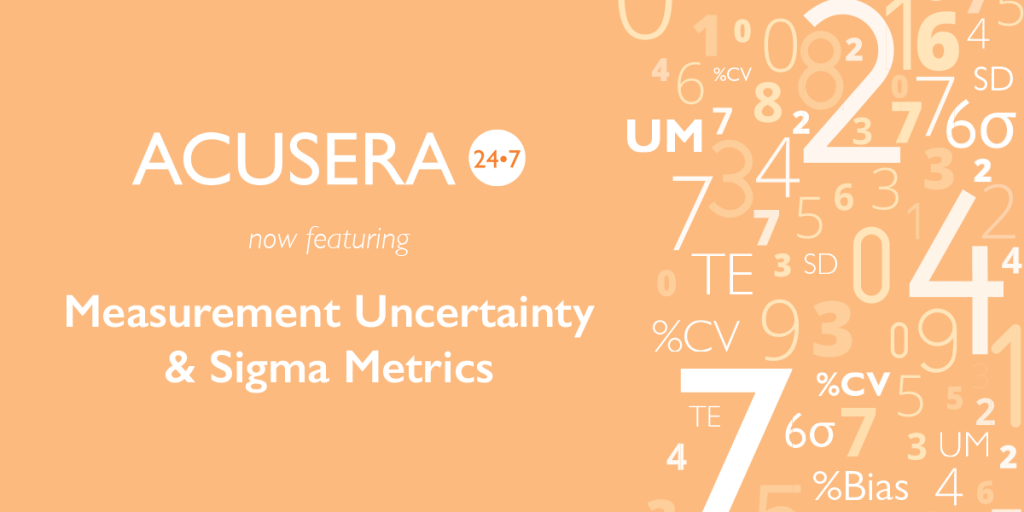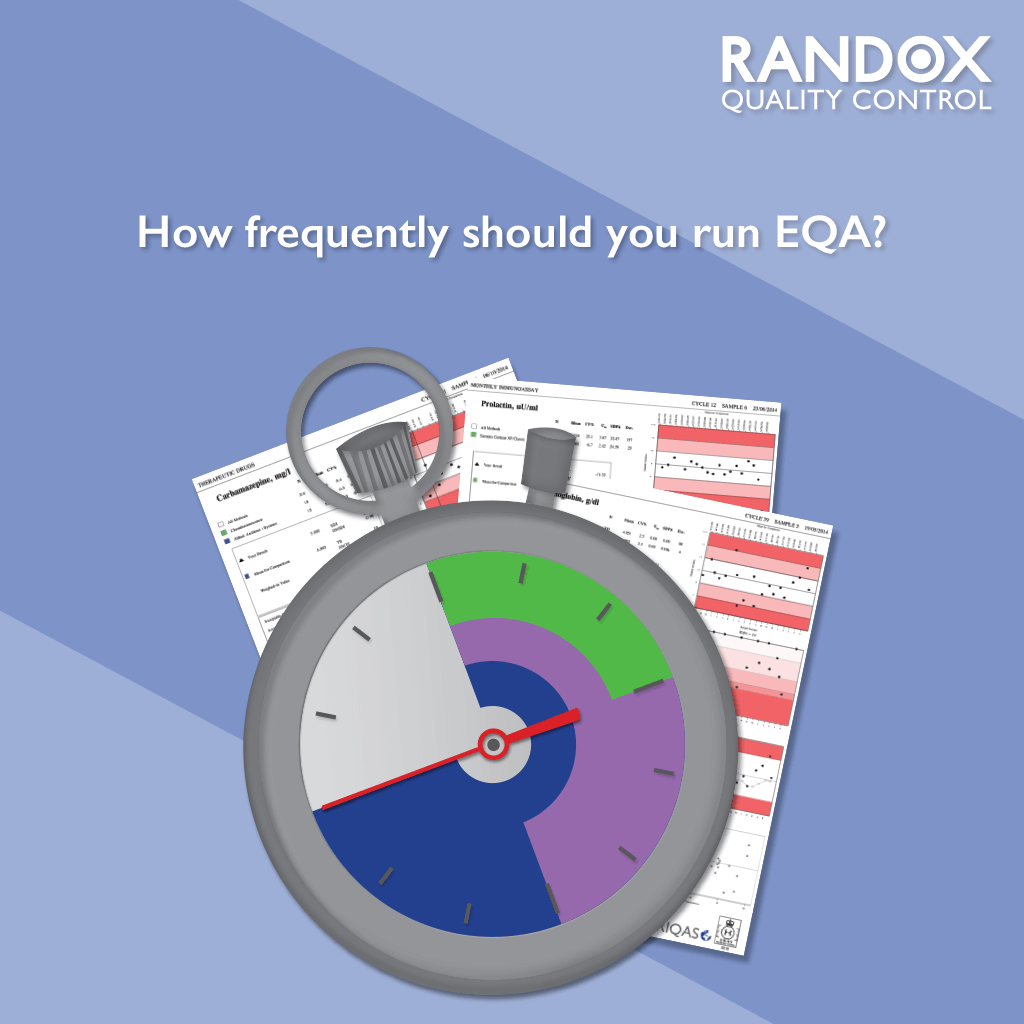What is Six Sigma?
What is Six Sigma?
Six Sigma is a method of process improvement which focuses on minimizing variability in process outputs. The Six Sigma model was developed by Motorola in 1986, and Motorola have reportedly saved over $17 Billion due to its successful implementation.
The model looks at the number of standard deviations (SD) or ‘sigmas’ that fit within the quality specifications of the process. In the laboratory, the quality specifications relate to the Total Allowable Error (TEa). The higher the number of standard deviations that fit between these limits, the higher the sigma score and the more robust the process or method is. As sources of error or variation are removed from a process, the SD becomes smaller and therefore the number of deviations that can fit between the allowable limits is greater; ultimately resulting in a higher sigma score.
A process with a sigma score of six is considered to be a high quality process, making six the target for many industries including the clinical laboratory.
In order to achieve Six Sigma, a process must not produce more than 3.4 defects per million opportunities. In a Laboratory context, this would equate to 3.4 failed QC results per million QC runs.
Sigma is calculated using the following equation:
Sigma = (TEa – %Bias) / %CV
TEa – Total Allowable Error
%Bias – Deviation from the target or peer group mean
%CV – Imprecision of the data

Why is Six Sigma useful in the laboratory?
Six Sigma can be used to help answer one of the most commonly asked questions in laboratory quality control. How often should I run QC?
The Six Sigma model allows laboratories to evaluate the effectiveness of their current QC processes. Its most common use is to help implement a risk-based approach to QC, where an optimum QC frequency and multi-rule procedure can be based on the sigma score of the test in question. The performance of tests or methods with a high sigma score of six or more may be evaluated with one QC run (of each level) and a single 1:3s warning rule. On the other hand, tests or methods with a lower sigma score should be evaluated more frequently with multiple levels of QC and a multi-rule strategy designed to increase identification of errors and reduce false rejections.
The below table shows how multi-rules and QC frequency can be applied according to Sigma Metrics:
| Sigma Score | QC Frequency | Number of QC Samples | QC Rules |
| 6 or more | Once per day | Each level of QC | 1:3s |
| 5 | Once per day | Each level of QC | Multi-rule strategy |
| 4 | At least twice per day | Each level of QC | Multi-rule strategy |
| < 4 | At least four times per day | Each level of QC | Multi-rule strategy |
It is important to note that this is just an example and it may be necessary to run QC samples more often than three times per day. Some high throughput laboratories prefer to run QC samples before and after a set number of patient samples, while others opt to run QC samples after a set period of time. Whatever frequency you choose it is vital that the frequency is appropriate for the test in use. Download our guide ‘How often is right for QC’ to find out more.
What can Randox offer?
Randox’s Acusera 24.7 Live Online is a peer group reporting software application designed to complement the Acusera QC range. The intuitive and user-friendly software boasts some of the most advanced features on the market, and Version 1.6 provides automatic calculation of sigma scores for individual assays, giving the user an at-a-glance overview of assay performance.
Peer group reporting software is an integral part of any modern laboratory seeking to streamline their QC processes and reduce costs. With Acusera 24.7 Live Online, there has never been a better time to implement, save and succeed.
Contact us today to find out how Randox can help your laboratory achieve its goals.
How frequently should you run EQA?
There is much debate among clinical laboratories when discussing this common question. With some schemes offering testing as little as 2 times per year, it raises the question, is this really enough?
How frequently an EQA scheme is run will often be dependent on several aspects. Factors such as the diagnostic error rate, number of tests undertaken, experience and turnover of technical staff, and the known stability/instability of the analyte in question should be considered and will all contribute to determine the desired frequency of EQA.
Each EQA programme will vary, where one area, for instance Chemistry, may require bi-weekly testing, another, such as Serology, may only need to be tested every 3 months. Although there is variation between schemes, the benefits of testing more frequently unquestionably outweighs the costs of not testing frequently enough.
Issues with infrequent testing?
If your EQA provider offers infrequent testing, there is likely to be a lengthy period of uncertainty where errors could be happening in the laboratory and consequently incorrect results being released. The outcome of this could be damaging to both patients and laboratories, with credibility and trust in results likely to come under scrutiny. For these reasons, having an infrequent EQA scheme could cause harm to your laboratory and reduce confidence in your test results.
Why should you use a frequent EQA scheme?
To ensure the previously mentioned errors do not occur, laboratories should participate in frequent EQA schemes to guarantee that if incorrect test results do arise, then they will be detected and rectified immediately.
As preventative/corrective actions can be taken sooner through frequent EQA schemes, you will have increased confidence in your test systems performance and may reduce the need for expensive retests. Being able to pinpoint when an error occurred will be much simpler if you are only looking back a matter of weeks or a couple months, as opposed to if you are looking back over a longer period such as 4 to 6 months.
The ability to implement corrective actions sooner and with less disruptions to the lab will help lead to both time and cost savings in the future.
What can Randox Quality Control offer?
Randox International Quality Assessment Scheme (RIQAS), offers bi-weekly, monthly and quarterly reporting options* designed to assist with the early identification of laboratory errors. Not only will RIQAS provide you with extra confidence in test system accuracy, but with 32 flexible programmes you could also make significant cost and time savings through consolidation.
With more than 40,000 participants in 124 countries, RIQAS is the largest international EQA scheme on the market and offers laboratories around the world assurances that the results they are releasing are accurate and reliable. Our many features include; the ability to register up to 5 instruments per programme at no extra cost, easy to read reports, internationally accredited programmes and rapid report turnaround. Why don’t you contact us today and find out how we can support you in maintaining quality control in your laboratory?
*Programme Specific


